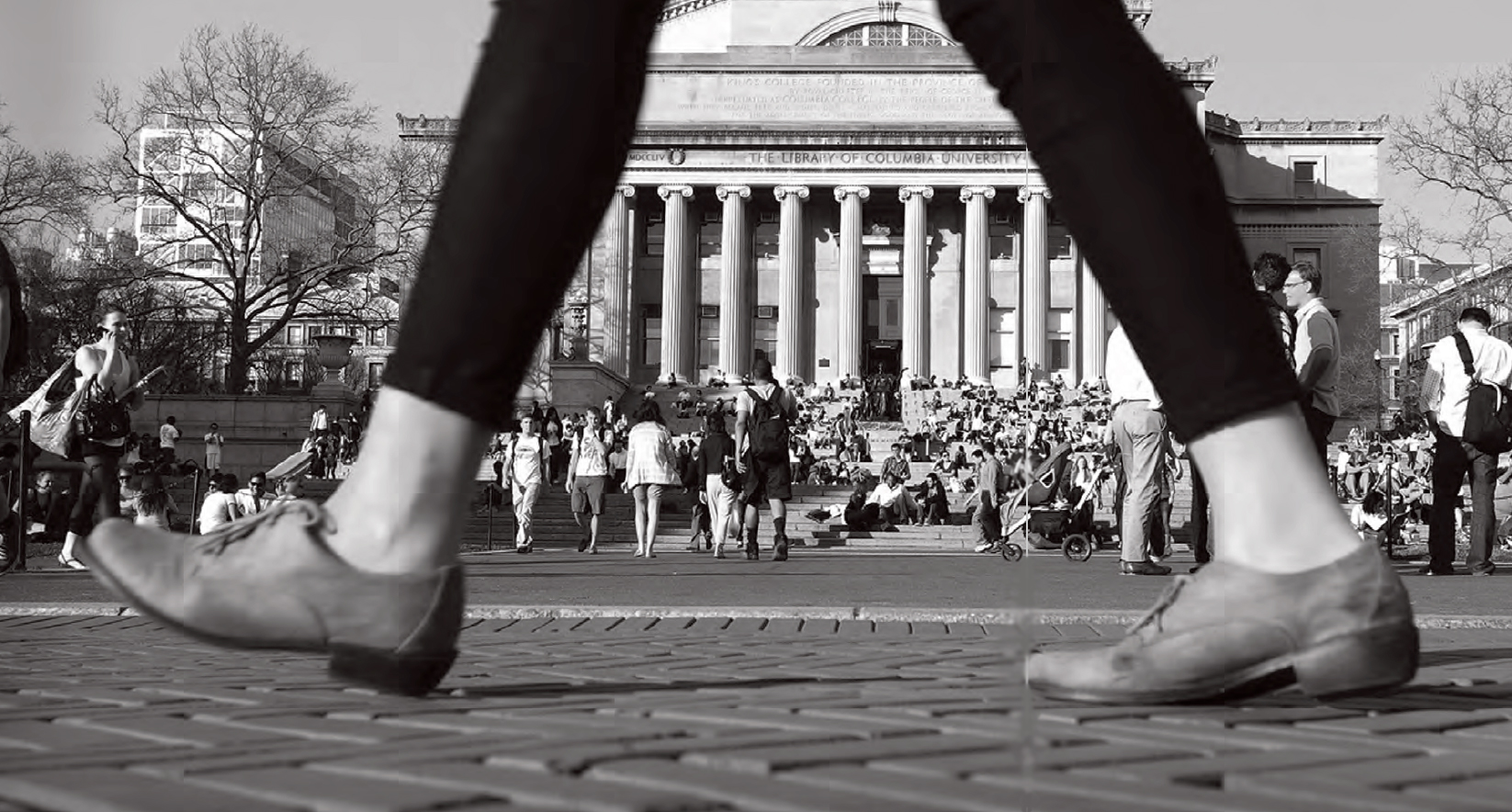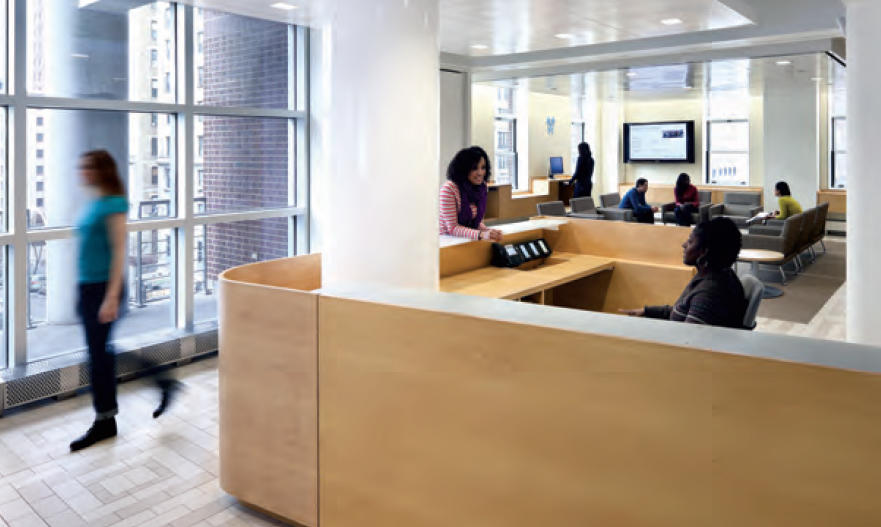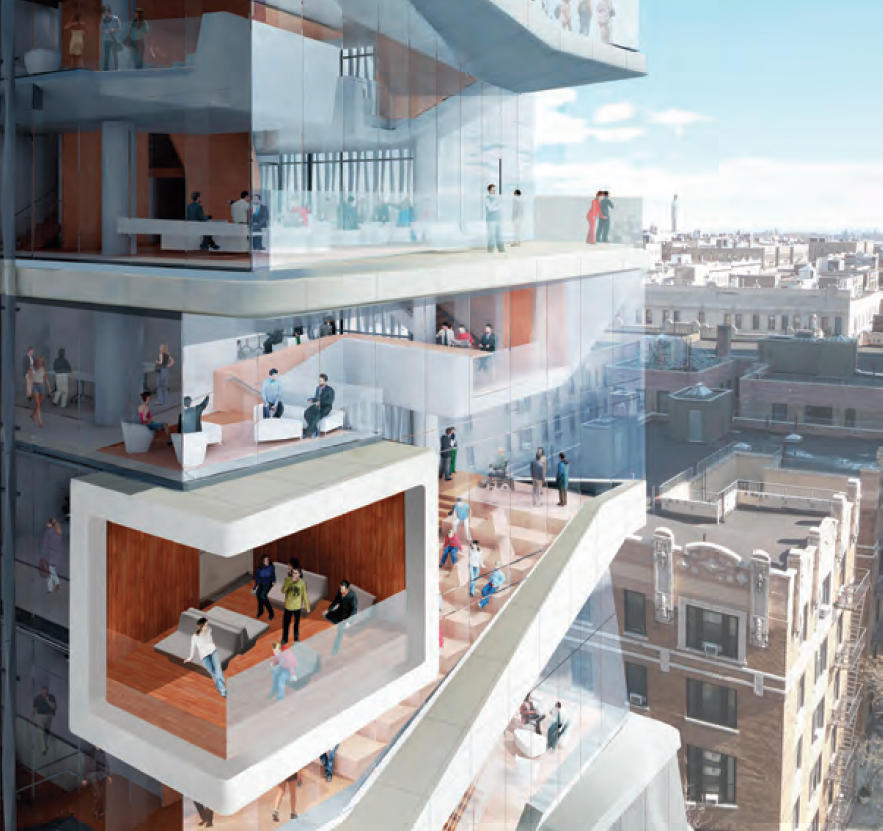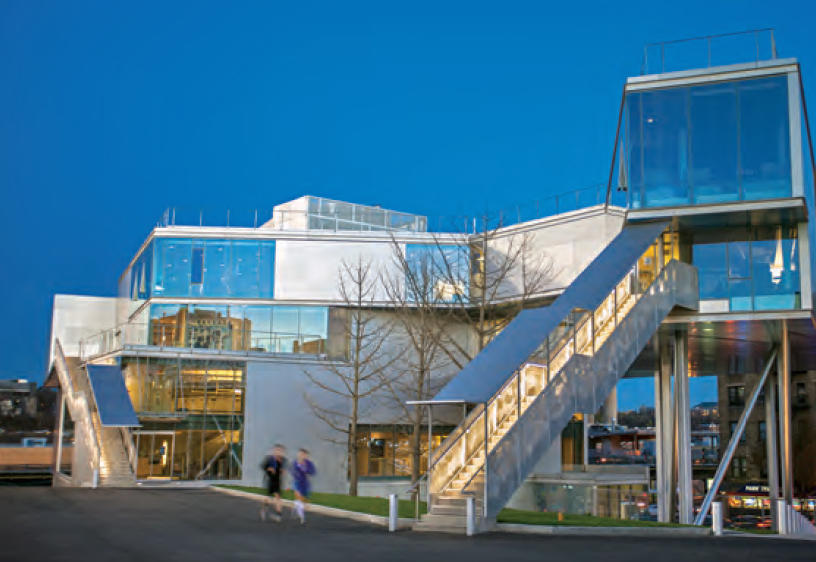
When Columbia officials announced in 2006 that they were embarking on a University-wide fundraising campaign, they set a remarkably ambitious goal: to raise $4 billion by the end of 2011. At the time, no university had ever attempted to raise so large a sum in a single campaign. When, in 2008, the worst economic collapse since the Great Depression began, observers might have assumed that would-be donors would tighten their purse strings and the whole effort would fizzle.
Instead, the Columbia Campaign was a triumph. It hit its goal of $4 billion a year ahead of schedule and was extended to run through the end of 2013. This past January, University officials announced the campaign’s final tally: $6.1 billion. That total, they say, represents the largest sum ever raised in an Ivy League campaign and the second largest raised by any university.
“Even the bare statistics underlying the campaign total are amazing and should give us heart for Columbia’s future,” wrote President Lee C. Bollinger ’71LAW in a letter to alumni on January 30. “More than $1 billion has been raised for student financial aid across our schools. Close to $1 billion in capital funding has been dedicated to 40 different facilities projects ... More than 260 endowed professorships will enhance Columbia’s world-class faculty. All this and more, remarkably, has been made possible by Columbia supporters residing in 141 countries, with 128,000 new donors.”
To compare the success of one university’s fundraising campaign to those of its peers is tricky, given that campaigns last for different lengths of time, but the fact that Columbia has entered the top echelon of nonprofit institutions in terms of fundraising is indisputable. Last year, Columbia raised approximately $647 million, which was fourth highest among all US universities, behind only Stanford, Harvard, and the University of Southern California.
“Donors and alumni have clearly been inspired by the sense of a historic transformation at Columbia in recent years,” says Fred Van Sickle, who has led the University’s development and alumni-relations office since 2011, and played a key role in planning the Columbia Campaign from the time of its inception, when he served as vice president for development. “None of us began this effort imagining we would exceed $6 billion.”
Susan K. Feagin ’74GS, who previously oversaw the development and alumni-relations office and who was also among the campaign’s chief architects, says the Columbia Campaign coincided with, and benefited from, an unprecedented effort on the part of the University to connect with its alumni. Historically, she says, Columbia had provided its graduates too few opportunities to engage with one another and to get involved in University activities.
“There was an urban myth that Columbia alumni didn’t feel the same kind of school spirit that alumni of other Ivies felt,” says Feagin, who had been Bollinger’s top fundraiser when he was president of the University of Michigan and who followed him to Columbia in 2002. “We’d soon discover this wasn’t the case. But I think the perpetuation of this myth had caused Columbia to do too little in reaching out to its alumni in the past.”
It became clear that alumni were eager to participate in the life of the University, Feagin says, when tens of thousands turned out for celebratory events held around the world for Columbia’s 250th anniversary in 2003 and 2004. To keep the momentum going, the Columbia Board of Trustees soon worked with Feagin’s office to oversee the creation of the Columbia Alumni Association, a worldwide umbrella organization for alumni that has since helped to launch dozens of new regional clubs and interest groups; open the Columbia Alumni Center at West 113th Street; and roll out many new services and programs for alumni — as varied as enhanced library privileges, online job-search tools, and cultural and intellectual events organized specifically for them.
“We invited people to reconnect with Columbia in whatever ways worked for them,” says Feagin. “We hoped that people would choose to express their pride in the University by donating money, obviously. But Lee and I shared a belief that we needed to start by doing right by alumni. We wanted to nurture a real sense of community among them. We knew that our outreach couldn’t be a fakey-fake gesture. It had to be authentic. We trusted that good things would follow from that.”
Big Ideas
While members of Feagin’s team and their partners at Columbia’s individual schools were establishing new points of contact with alumni, Bollinger, still early in his presidency, was articulating a bold vision for the University’s future. He said that Columbia, whose reputation had been rising steadily for two decades, was poised to enter a new era of accomplishment that would match, in grandeur and excitement, its mid-twentieth-century heyday, and that would be characterized by grand new interdisciplinary research projects, an expanded global presence, and a deeper integration into the fabric of New York City. At the same time, Bollinger said he was committed to maintaining the best aspects of the university he was inheriting, such as its commitment to giving students from all financial backgrounds equal access to a Columbia education.
The plans that Bollinger developed, in partnership with the University Trustees, deans, and faculty, would require a massive fundraising effort to renew the strength of the faculty, to support students, and to construct new buildings — including at the University’s new seventeen-acre campus in an old manufacturing zone of West Harlem called Manhattanville. Those who worked closely with Bollinger at the time say he possessed an intuitive knack for persuading others that Columbia’s intellectual strengths could be harnessed for large-scale, University-wide initiatives aimed at addressing the most complex problems facing society. Among the lead fundraising priorities, for instance, was constructing a home for what would become known as the Mortimer B. Zuckerman Mind Brain Behavior Institute, where neuroscientists, engineers, physicists, chemists, biologists, psychiatrists, and others were investigating how the electrochemical pulses between the neurons in our brains give rise to thoughts, memories, and emotions — and can sometimes go haywire, leading to conditions like schizophrenia, Alzheimer’s disease, and depression.
“Lee is among the greatest of Columbia’s presidents, along with Seth Low and Nicholas Murray Butler, in that he has a long-term vision for Columbia and the management and leadership skills to actualize it,” says Richard E. Witten ’75CC, a Trustee emeritus who, as chair of the board’s alumni and development committee from 2001 to 2012, played a key role in the campaign. “Part of his vision, clearly, is that a large research university should bring together people from lots of different fields to address the most pressing issues of our time, whether that involves climate change, brain science, or personalized medicine. Lee describes these projects to people in a way that is inspiring. They want to be a part of this mission, to contribute to it.”
Over the next several years, some 200,000 alumni, parents, and friends of the University donated to the Columbia Campaign. Several of the gifts came from well-known philanthropists whose donations to Columbia were among their most generous. The family foundation of Dawn M. Greene, who died in 2010, gave Columbia $250 million for the Zuckerman Institute’s home; this nine-story glass tower, named for Dawn’s late husband, Jerome L. Greene, is now being constructed on the Manhattanville campus. Mortimer B. Zuckerman gave $200 million to support the institute that now bears his name. The late John W. Kluge ’37CC, ’88HON gave Columbia $400 million for financial aid, the largest gift ever in higher education solely for that purpose. Henry R. Kravis ’69BUS and Ronald O. Perelman each gave the University $100 million to construct a new home for the business school in Manhattanville. And Gerry Lenfest ’58LAW, ’09HON contributed more than $150 million, including $30 million for a new arts center in Manhattanville and $60 million for endowed professorships in the Arts and Sciences, the law school, and the Earth Institute.
The campaign was truly a University-wide affair, with approximately one-third of the total $6.1 billion raised going toward the Columbia University Medical Center. Among the key contributors to the CUMC drive were P. Roy Vagelos ’54PS and his wife, Diana Vagelos ’55BC, whose gifts included $50 million for a new Medical and Graduate Education Building that is now being built on Haven Avenue in Washington Heights.
The spirited drive to connect the right donor to the right giving opportunity was propelled by alumni volunteers, who spent countless hours identifying potential donors, paying visits to fellow alumni to inquire if they were willing to support particular University programs, and working with Columbia staff on the campaign’s overall strategy. These efforts started with the Columbia Trustees themselves. “The members of this board recognized, early on, that nobody in the world had greater aspirations for Columbia than did Lee Bollinger,” says William V. Campbell ’62CC‚ ’64TC, who, as chair of the Trustees, worked closely with Bollinger, Feagin, and Van Sickle on the fundraising trail. “We were right there with him. This was a board that got their fingernails dirty. We worked like hell for this.”
The success of the campaign depended not only on big gifts. It also required building a broad base of support: in total, nearly 693,000 donations came in from alumni, parents, students, and friends — including many from patients of the Columbia University Medical Center and their families. This spirit of participation was on full display when, on October 23, 2013, nearly ten thousand donors from all fifty states and fifty-three countries contributed on the second annual Columbia Giving Day, a twenty-four-hour online fund drive that raised $7.8 million. These contributions went into the annual funds of Columbia’s various colleges and schools. The annual funds are crucial for supporting financial aid, student services, salaries, and other operating expenses, whether or not the University is in the midst of a campaign.
“The measure of a campaign’s success isn’t merely the amount of money you’ve raised,” says Donna MacPhee ’89CC, the University’s vice president for alumni relations. “It’s also about how well you’ve energized your alumni, connecting them to each other and ensuring their lifelong role in the University community. In this sense, too, the Columbia Campaign was a huge success.”
Access to the Best
Today, as a result of the campaign, students from across Columbia receive more generous financial-aid packages than they used to. They are taught by professors who are among the most distinguished in the institution’s history. And they have access to new science labs, art studios, athletic fields and training facilities, residence halls, and academic advising services.
“I believe that this campaign has changed Columbia more than any campaign has ever changed any university that I know of, in the United States or beyond,” Bollinger told the fundraising and alumni-relations staff at a recent gathering. “It’s been a transformative event for this institution.”
Raising money for financial aid has long been a priority for Columbia, and an influx in donations for undergraduate financial aid over the past decade has enabled the University to significantly enhance the assistance it gives to students. For instance, the College and the engineering school have in recent years instituted a policy eliminating parent contributions from families earning less than $60,000 per year.
“Financial aid allows us to bring students here who can best benefit from, and contribute to, Columbia without concern for how they will pay for the experience,” says College dean James J. Valentini.
Recruiting and retaining top-notch faculty is another enduring priority for the University’s fundraisers. The creation of some 265 new endowed professorships over the course of the campaign was vital to this end; these prestigious positions are used by the University to reward its best faculty and to lure eminent scholars. Donors tend to create endowed professorships in fields that are of personal interest to them and are growth areas for the University.
Among those to receive an endowed chair in recent years is Michael B. Gerrard, a prominent New York City environmental lawyer who was recruited to Columbia Law School to take a new professorship funded by Andrew Sabin, a businessman with a long devotion to environmental causes. Gerrard and a team of graduate assistants are now studying the novel legal issues that will arise if island nations get submerged by rising seas as a result of climate change.
“The questions we’re interested in, such as whether a nation whose entire population gets displaced should retain its sovereignty have little or no precedent in international law,” says Gerrard. “The endowment that Andy created is making possible work that might not be done otherwise.”
Profiles of other faculty members with newly endowed professorships, in fields as varied as nursing, economics, African art history, and brain science, can be read online at illuminate.columbia.edu.
Room to Grow
There is probably not a student or faculty member at Columbia who has not benefited from the campaign in some way. Hundreds of millions of dollars have been raised for new graduate fellowships. New research centers and institutes have been established in digital journalism, sustainable development, climate science, data science, business law and policy, motor-neuron research, Israel and Jewish studies, Mexican studies, and dozens of other areas. A network of Columbia Global Centers has been set up in Amman, Beijing, Istanbul, Mumbai, Nairobi, Paris, Rio de Janeiro, and Santiago so that faculty and students can easily undertake research and teaching projects in collaboration with local partners around the world.
For visitors to campus, the most visible change is a wave of construction that has been made possible by the campaign. Half a dozen buildings have sprouted up in recent years or are now taking shape, while several major renovations have been undertaken. The new buildings are ambitious, created by world-class architects such as José Rafael Moneo, Renzo Piano, Steven Holl, and Liz Diller. Most have glass façades that enable passersby to view what’s happening inside and spacious interiors that are intended to foster serendipitous interactions among scholars and students.
“These architects are helping Columbia reimagine what a university campus should be,” says Mark Wigley, dean of the Graduate School of Architecture, Planning, and Preservation. “One of the changes you can see is that the new buildings are not weighty structures that speak merely to the accumulation of old knowledge. Rather, they have a brightness about them, a lightness and an energy that is meant to inspire new ideas, such as those that come from collaborations. They are wonderfully forward-looking.”
Columbia has long been pressed for space, and by the time Bollinger became president in 2002, he says, the cramped quarters were holding back some of Columbia’s departments from growing. He decided early on that constructing new facilities was among his top priorities.
“There were many Columbia departments that couldn’t cover the basics of their disciplines,” Bollinger told Columbia Magazine. “They needed to be bigger to become absolutely top departments. That’s why space and funding are two things I have focused on.”
The first large campaign-funded construction project was completed in 2007, when the Gary C. Comer Geochemistry Building opened at the Lamont-Doherty Earth Observatory in Palisades, New York. In 2010, the Northwest Corner Building, a fourteen-story lab facility for chemists, physicists, biologists, and engineers, popped up on the last undeveloped plot on the Morningside campus, at the corner of Broadway and 120th Street. That same year, the University broke ground on the Jerome L. Greene Science Center, which is scheduled to be finished in 2016. The Lenfest Center for the Arts, an exhibition and performance space, will open in Manhattanville around the same time the Greene Science Center is complete, with a new home for the business school going up there two years later.
The Columbia University Medical Center is expanding, too. The new Medical and Graduate Education Building, for which the Vagelos family gave $50 million, will be the first major update of the medical center’s educational infrastructure in nearly fifty years when it opens in 2016. Lead gifts for the project also include $20 million from Philip Milstein ’71CC and his wife, Cheryl Milstein ’82BC; and $10 million from Clyde Wu ’56PS and his wife, Helen Wu. The Columbia School of Nursing is planning to build a new home at CUMC in the coming years, as well.
According to Bollinger, all that brick and mortar is essential to the University’s future, enabling its academic departments to scale up in size, solidifying their core strengths while branching off into new areas of specialization.
“We have to have growth as the institution evolves,” he said. “We need new buildings because we have to add faculty and students. That is the history of great institutions. As we generate more knowledge, that knowledge becomes more complex. We need to have more people contributing to these efforts and making use of the insights that result.”
Moving Forward
The Columbia Campaign may have officially concluded, but as the University’s programs expand and grow, so too will the need for philanthropic support.
One critical measure of the University’s financial situation is the size of its endowment. Columbia’s endowment, despite having grown significantly since the start of the campaign, to its current value of about $8.2 billion, is still much smaller than those of its peers: Harvard has an endowment of $32 billion, Yale $21 billion, Stanford $19 billion, and Princeton $18 billion. Consequently, these institutions can draw much larger payouts from their endowments than Columbia can each year. Since Columbia is competing with these institutions for the best faculty and students, raising money for the University’s endowment remains a key priority.
Over the next few decades, the University expects to build more facilities in Manhattanville. And emerging academic strengths in areas such as data science — embodied by the establishment of the Institute for Data Sciences and Engineering two years ago — point toward a future when increasing numbers of Columbia scholars become involved in novel interdisciplinary projects. Bollinger’s office recently launched a presidential task force to develop Columbia’s research programs in personalized medicine, for instance. This may spawn new collaborations among geneticists, physicians, data scientists, statisticians, and experts in many other fields.
“There are even more big ideas being contemplated now than at the start of the campaign,” says Van Sickle. “While there is not a new campaign on the horizon, everybody is committed to maintaining the momentum we have. That goes for our alumni-relations efforts as well as for our fundraising. I would expect to see an ongoing trajectory of more and more engagement and outreach to alumni.”
George Van Amson ’74CC, a Trustee emeritus who now serves as chair of the Columbia Alumni Association, guarantees this will be the case.
“Whether alumni are interested in the arts, lifelong learning, career networking, sports events, or lectures and panels, they’re only going to get more of these opportunities from Columbia in the future,” he says. “People in leadership positions at the University over the past few years have recognized that alumni are among the most important stakeholders in this whole enterprise. They’ve recognized that alumni were yearning for this kind of engagement — that they wanted to visit campus, to stay informed about what’s happening at Columbia, and to build a sense of community among themselves. This has put a lot of wind in Columbia’s sails. Everyone is serious about keeping that going.”






